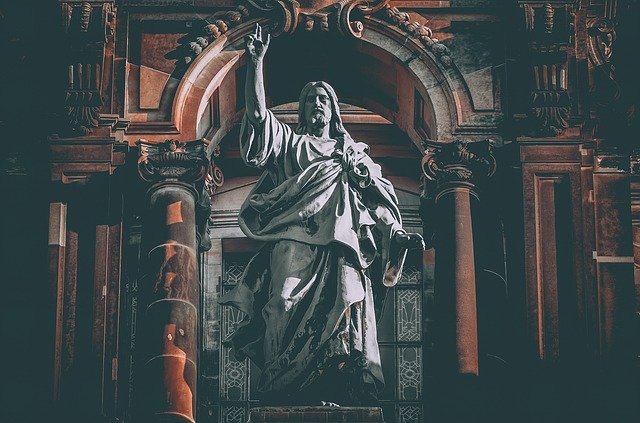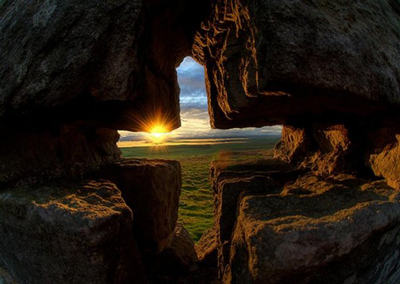
Who Wrote This Song?
What is the story behind this song that has changed million of lives.
THERE ARE FOUR VERSIONS TO THE ORIGIN OF THIS SONG
I Have Decided To Follow Jesus
I Have Decided To Follow Jesus;
I Have Decided To Follow Jesus;
I Have Decided To Follow Jesus;
No Turning Back, No Turning Back.
Though None Go With Me, Still I Will Follow;
Though None Go With Me, Still I Will Follow;
Though None Go With Me, Still I Will Follow;
No Turning Back, No Turning Back
The World Behind Me, The Cross Before Me;
The World Behind Me, The Cross Before Me;
The World Behind Me, The Cross Before Me;
No Turning Back, No Turning Back.

I Have Decided to Follow Jesus
STORY 1 - An Ordinary Man from Assam, North East India
Lyrics Attributed to Assamese Folk Melody from North East-India
Source: Dr. P.P. Job
 The story of the song is covered in the Book by Dr. P.P. Job and Indian preacher in His book “Why God Why” About 150 years ago, there was a great revival in Wales, England. As a result of this, many missionaries came from England and Germany to North-East India to spread the Gospel. At the time, north-east India was not divided into many states as it is today. The region was known as Assam and comprised hundreds of tribes. The tribal communities were quite primitive and aggressive by nature.
The story of the song is covered in the Book by Dr. P.P. Job and Indian preacher in His book “Why God Why” About 150 years ago, there was a great revival in Wales, England. As a result of this, many missionaries came from England and Germany to North-East India to spread the Gospel. At the time, north-east India was not divided into many states as it is today. The region was known as Assam and comprised hundreds of tribes. The tribal communities were quite primitive and aggressive by nature. The tribals were also called head-hunters because of a social custom which required the male members of the community to collect as many heads as possible. A man’s strength and ability to protect his wife was assessed by the number of heads he had collected. Therefore, a youth of marriageable age would try and collect as many heads as possible and hang them on the walls of his house. The more heads a man had, the more eligible he was considered.
Into this hostile and aggressive community, came a group of Welsh missionaries spreading the message of love, peace and hope of Jesus Christ. Naturally, they were not welcomed. One Welsh missionary succeeded in converting a man, his wife, and two children. This man’s faith proved contagious and many villagers began to accept Christianity. Angry, the village chief summoned all the villagers. He then called the family who had first converted to renounce their faith in public or face execution.
Moved by the Holy Spirit, the man instantly composed a song which became famous down the years. He sang:
I have decided to follow Jesus. (3 times)
No turning back, no turning back.
Enraged at the refusal of the man, the chief ordered his archers to arrow down the two children. As both boys lay twitching on the floor, the chief asked, “Will you deny your faith? You have lost both your children. You will lose your wife too.” But the man sang these words in reply:
Though None Go With Me, Still I Will Follow (3Times)
No Turning Back, No Turning Back.
The chief was beside himself with fury and ordered his wife to be arrowed down. In a moment she joined her two children in death. Now he asked for the last time, “I will give you one more opportunity to deny your faith and live.”
In the face of death the man sang the final memorable lines:
The World Behind Me, The Cross Before Me (3 times)
No Turning Back, No Turning Back.
He was shot dead like the rest of his family. But with their deaths, a miracle took place. The chief who had ordered the killings was moved by the faith of the man. He wondered, “Why should this man, his wife and two children die for a Man who lived in a far-away land on another continent some 2,000 years ago? There must be some supernatural power behind the family, and I too want that supernatural power.”
In a spontaneous confession of faith, he declared, “I too belong to Jesus Christ!” When the crowd heard this from the mouth of their chief, the whole village accepted Christ as their Lord and Savior. This is the power of God in demonstration.

I Have Decided to Follow Jesus
STORY 2 - A Garo Indian Prince from Assam, North East India
Music: Folk melody from India, arranged by Norman Johnson
Source: Hymnpod
 The world famous chorus ‘I Have Decided to Follow Jesus’ was composed by a Garo Christian (a tribe in the North-Eastern part of India) probably during the early part of Christianity of the tribe (late 1800AD) when the American Baptist Missionaries were involved with the tribe. Garo Hills was part of the state of Assam till 1971-2. Now, Garo Hills is
in state of Meghalaya, India (bordering Assam). It was written by one
of the early Garo converts, either Ramke or Rangku. This folk tune is a
traditional Garo tune. It had only two verses originally. Later a third
was added and included in the hymnal.The tune naturally suits the Garo cultural ethos and taste.
The world famous chorus ‘I Have Decided to Follow Jesus’ was composed by a Garo Christian (a tribe in the North-Eastern part of India) probably during the early part of Christianity of the tribe (late 1800AD) when the American Baptist Missionaries were involved with the tribe. Garo Hills was part of the state of Assam till 1971-2. Now, Garo Hills is
in state of Meghalaya, India (bordering Assam). It was written by one
of the early Garo converts, either Ramke or Rangku. This folk tune is a
traditional Garo tune. It had only two verses originally. Later a third
was added and included in the hymnal.The tune naturally suits the Garo cultural ethos and taste. I have decided to follow Jesus;
I have decided to follow Jesus;
I have decided to follow Jesus;
No turning back, no turning back.
Though no one join me, still I will follow;
Though no one join me, still I will follow;
Though no one join me, still I will follow;
No turning back, no turning back.
The world behind me, the cross before me;
The world behind me, the cross before me;
The world behind me, the cross before me;
No turning back, no turning back.

I Have Decided to Follow Jesus
STORY 3 - Sadhu Sundar Singh from Punjab, North West India
Source: Subversive Influence
 This song is well-known in most Christian circles, but until I looked it up for this feature, I did not know who had written it. Its lyrics are simple and evoke an image of gospel crusades and altar calls . . . . an image that is starting to call up mixed emotions for some of us. I find new insight into the lyrics by reviewing the life of its author.
This song is well-known in most Christian circles, but until I looked it up for this feature, I did not know who had written it. Its lyrics are simple and evoke an image of gospel crusades and altar calls . . . . an image that is starting to call up mixed emotions for some of us. I find new insight into the lyrics by reviewing the life of its author.Sadhu Sundar Singh was born September 3, 1889 into an important landowning Sikh family in Patiala State in northern India. Sundar Singh’s mother took him week by week to sit at the feet of a Sadhu, an ascetic holy man, who lived in the jungle some miles away, but also sent him to a Christian high school where he could learn English.
The death of his mother when he was fourteen plunged him into violence and despair. He persecuted the missionaries’ Christian converts and ridiculed their faith. In defiance of the Christian faith, he bought a Bible and burned it page by page in his home compound while his friends watched. Three nights later, he determined to commit suicide on a railway line.
Sitting on the railway track, Sadhu loudly asked who is the true God. If the true God didn’t show Himself that night, he would commit suicide. Before dawn and shortly before the arrival of the train, God came to Sadhu. He wakened his father to announce that he had seen Jesus Christ in a vision and heard his voice: henceforth he would follow Christ forever, he declared. His father demanded that he give up this absurd conversion. When Sadhu refused, Sher Singh gave a farewell feast for his son, then denounced him and expelled him from the family. Several hours later, Sundar realized that his food had been poisoned, and his life was saved only by the help of a nearby Christian community. He was baptized on his 16th birthday.
Then, in October 1906, he set out from the Christian Leprosy Home at Sabathu where he had been serving. He wore a yellow robe and turban, the traditional garb of a Hindu sadhu, an ascetic devoted to the gods who either begged his way along the roads or sat meditating in some lonely place. The young Sundar Singh had chosen the sadhu’s way, but he desired to be a sadhu of a different sort. “I am not worthy to follow in the steps of my Lord,” he said, “but, like Him, I want no home, no possessions. Like Him I will belong to the road, sharing the suffering of my people, eating with those who will give me shelter, and telling all men of the love of God.”
He traveled through the Punjab and over the Bannihal Pass into Kashmir then through Muslim Afghanistan into the brigand-infested Northwest Frontier and Baluchistan. His robe gave him little protection against the snow, and his feet were torn by the rough path. Soon the Christian communities of the north referred to him as “the apostle with the bleeding feet.” In his travels he was stoned, arrested, and left to sleep in a wayside hut with a cobra for company. He was also visited by a shepherd who talked with strange intimacy about Jesus and then was gone. He made the first of several trips into Tibet.
[In 1908 Singh] recognized a basic dilemma of the Christian mission to India. A brahmin had collapsed in the hot, crowded carriage and, at the next station, the Anglo-Indian stationmaster came rushing with a cup of water from the refreshment room. The brahmin — a high-caste Hindu — thrust it away in horror. He needed water, but he could only accept it in his own drinking vessel. When that was brought, he drank and was revived. In the same way, Sundar Singh realized, India would not widely accept the gospel of Jesus offered in Western guise. That, he recognized, was why many listeners had responded to him in his Indian sadhu’s robe.
He returned to Tibet in 1912, followed by annual trips. Stories from those years are incredible at times, and some contended that these were mystical rather than real happenings. From this trip, he returned with an account of finding a three-hundred-year old Christian hermit in a mountain cave, the Maharishi of Kailas, with whom he spent several weeks in deep fellowship.
Before age 30, his image was widely known. His talks and personal speech sprang out of his early-morning meditations, especially on the Gospels, and many people said, “He not only looks like Jesus, he talks like Jesus must have talked.” In 1918 he made a long tour of South India and Ceylon, and the following year he was invited to Burma, Malaya, China, and Japan. Travels to Britain were paid for by his father, who had recently converted to Christianity as well. Sundar visited the United States, Australia, and Europe, returning to India in 1922.
In 1923 he made the last of his regular summer visits to Tibet, returning home exhausted to spend the next few years, in his own home or those of his friends in the Simla hills, meditating, fellowshiping with others, and writing. In 1929, against all his friends’ advice, Sundar determined to make one last journey to Tibet. He was last seen on the 18th of April 1929 setting off for Tibet. In April he reached Kalka, a small town below Simla, “a prematurely aged figure in his yellow robe among pilgrims and holy men” beginning their own treks to one of Hinduism’s holy places some miles away. He was not seen again; his death remains a mystery, but he is believed to have died somewhere in the foothills of the Himalayas in 1929.
I Have Decided To Follow Jesus
I have decided to follow Jesus;
I have decided to follow Jesus;
I have decided to follow Jesus;
No turning back, no turning back.
Though I may wander, I still will follow;
Though I may wander, I still will follow;
Though I may wander, I still will follow;
No turning back, no turning back.
The world behind me, the cross before me;
The world behind me, the cross before me;
The world behind me, the cross before me;
No turning back, no turning back.
Though none go with me, still I will follow;
Though none go with me, still I will follow;
Though none go with me, still I will follow;
No turning back, no turning back.
Will you decide now to follow Jesus?
Will you decide now to follow Jesus?
Will you decide now to follow Jesus?
No turning back, no turning back.

I Have Decided to Follow Jesus
STORY 4 - An Indian Princess - from India
Source: Ivan Menezes
 I was told by a friend that it was written by an Indian princess, who when she heard the gospel surrendered her life to Christ. Later when her father said that she would not get any inheritance from his kingdom , she penned these lines down.
I was told by a friend that it was written by an Indian princess, who when she heard the gospel surrendered her life to Christ. Later when her father said that she would not get any inheritance from his kingdom , she penned these lines down. I Have Decided To Follow Jesus
I have decided to follow Jesus;
I have decided to follow Jesus;
I have decided to follow Jesus;
No turning back, no turning back.
Though I may wander, I still will follow;
Though I may wander, I still will follow;
Though I may wander, I still will follow;
No turning back, no turning back.
The world behind me, the cross before me;
The world behind me, the cross before me;
The world behind me, the cross before me;
No turning back, no turning back.
Though none go with me, still I will follow;
Though none go with me, still I will follow;
Though none go with me, still I will follow;
No turning back, no turning back.
Will you decide now to follow Jesus?
Will you decide now to follow Jesus?
Will you decide now to follow Jesus?
No turning back, no turning back.
*If you know or come across any original source documents for this song, "I Have Decided To Follow Jesus" please do write to us so that we can update the information here. With every blessing to you. - South Asian Connection
Leave a Comment: